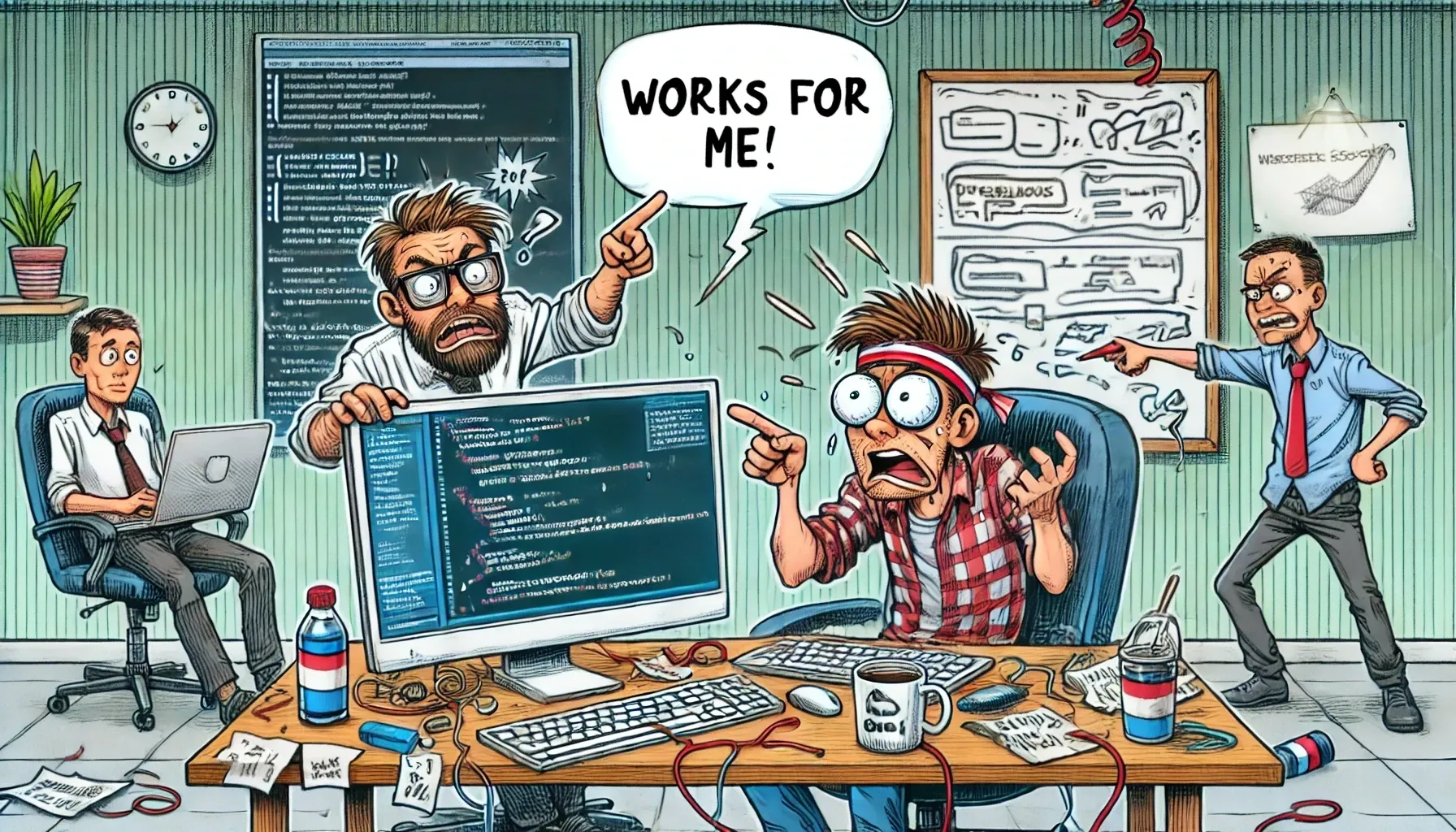"It Works on My Machine" and Other Lies We Tell Ourselves
A Survival Guide to Blame Your Team and the Universe

"Congratulations! You’ve discovered a new dimension where physics doesn’t apply."
Let’s be real: your local environment isn’t a development setup—it’s a magical realm where dependencies resolve themselves, environment variables grow on trees, and all edge cases politely disappear. But the moment your code touches production? It’s like sending a pampered housecat into the jungle. Suddenly, your flawless logic is just… wildlife footage.
So of course it works locally! You’ve spent years curating this digital landfill into a fragile ecosystem of deprecated gems, half-installed Docker containers, and a node_modules folder that defies the laws of thermodynamics. Production, meanwhile, is a sterile prison where your code is forced to follow the best practices.
Disgusting.
The Art of Deflection
When your code fails in production, remember: deny, deflect, disappear.
Master these phrases:
- “Must be a caching issue.” (Nobody understands caching. Nobody.)
- “Did you run
npm install?” (The problem is always npm. Always.) - “Works on my machine ¯_(ツ)_/¯” (The nuclear option. Deploy with pride.)
For advanced gaslighting, add:
- “This worked in the staging environment.” (Staging? Never heard of her.)
- “Must be a race condition.” (No one will ask follow-ups. They’re scared of races now.)
The ‘Works on My Machine’ Certification Program
Become a certified “It Works on My Machine” developer in 3 easy steps:
- Ignore all warnings. Compilers are just fearmongering.
- Never test on a clean environment. If it runs once, it’s fine.
- Blame the user. “Are you sure you clicked the button right?”
Graduation Exam: Deploy a “Hello World” app. When it crashes, insist the server is “oppressing your creativity.”
The Five Stages of Production Grief
- Denial: “But it WORKS LOCALLY!”
- Anger: “WHO TOUCHED MY CODE?!”
- Bargaining: “What if we just… reboot the universe?”
- Depression: Cries in
sudo rm -rf /*. - Acceptance: “Fine. I’ll add another
try-catch.”
Conclusion
At the end of the day, “It works on my machine” isn’t a failure—it’s a philosophy. A testament to humanity’s hubris in the face of entropy. So next time your code explodes in production, remember:
“You didn’t write a bug. You wrote a ✨feature✨ that only works in a parallel dimension.”
Call to Inaction:
Why fix your code when you can just buy a “Works on My Machine” hoodie and lean into the meme? Share this blog with a colleague who’s currently sobbing into their IDE. Together, we can normalize delusion.
